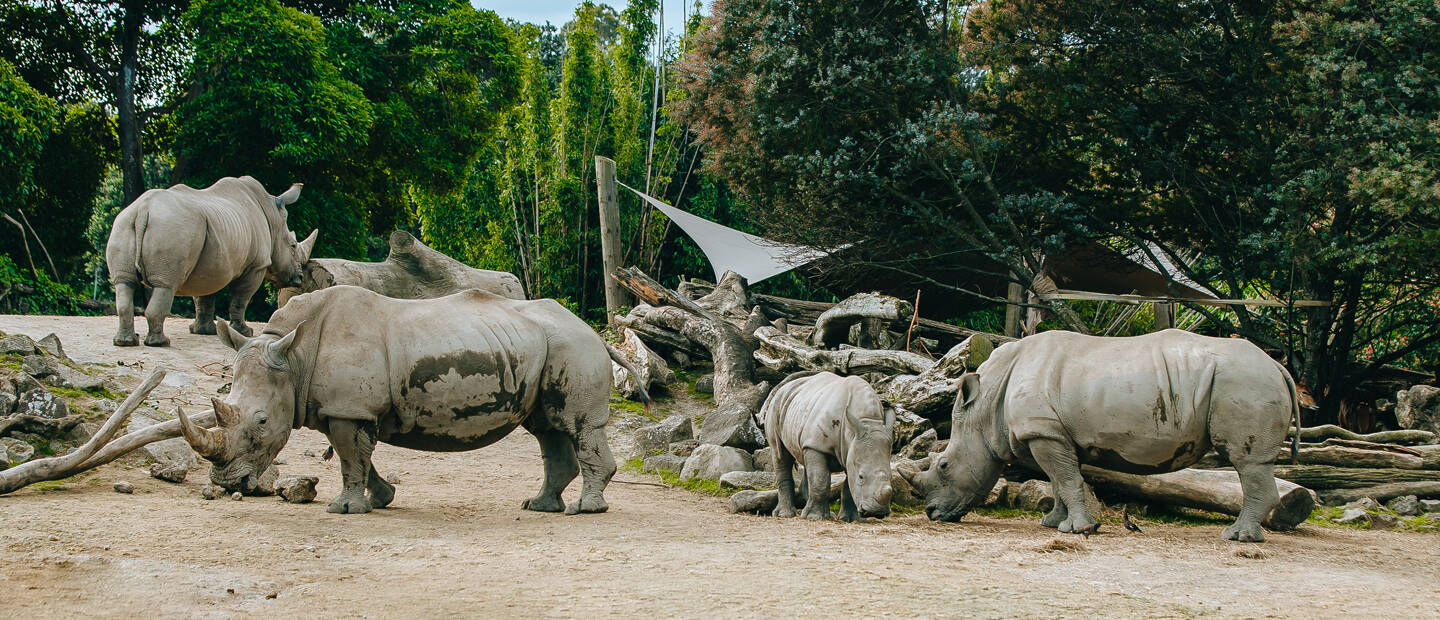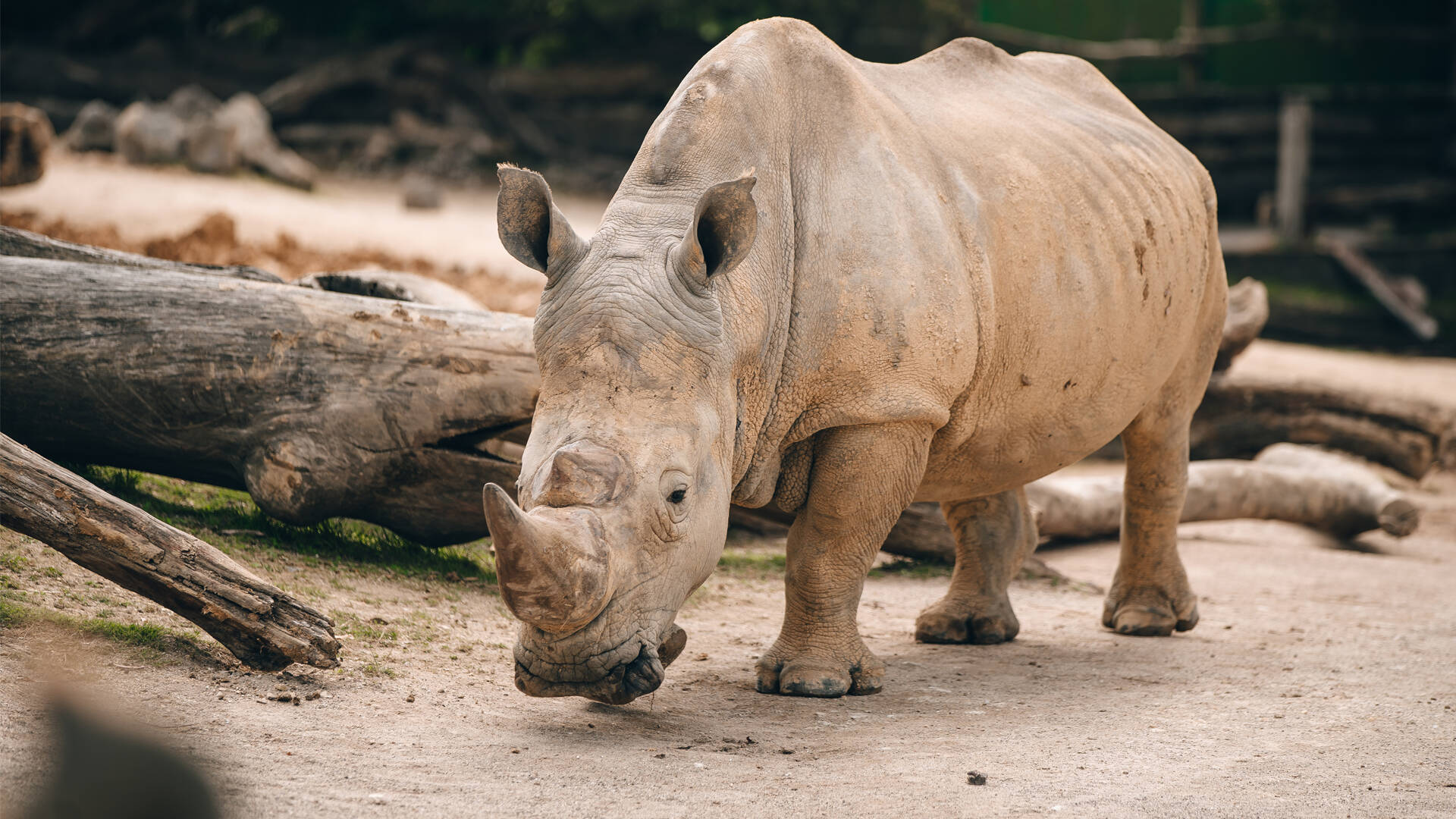“A gentle giant (1900+kg), super chilled and a wonderful dad” is how our Ungulates keepers describe Zambezi, the Zoo’s 34-year-old male southern white rhinoceros who can regularly be seen enjoying an enriching mud wallow – rain or shine!
“Zambezi (now of an age considered geriatric for a rhino) has such a lovely nature and a great way of interacting with his very energetic offspring Nyah (3.5 years) and Amali (1.5 years) who keep him active and on his toes. They love to play fight and hang out and eat with their dad and will sometimes be a little annoying while he’s resting, but he’s always extremely patient and gentle towards them,” says Ungulates team leader Tommy.
Like all geriatric animals at Auckland Zoo, as part of the Zoo’s science of care and holistic approach to animal health and wellbeing, Zambezi receives an extra level of monitoring and health checks by our keepers and veterinary team. This includes regular weighs and body condition assessment, as well as regular blood and faecal sample analysis.
“Geriatric herbivores also receive regular dental check-ups. Herbivores are plant-eating animals (including horses, rhinos, and many others). These animals need to chew their food for many hours each day, so having healthy teeth and a comfortable mouth is really important,” says Auckland Zoo’s veterinary manager James.





